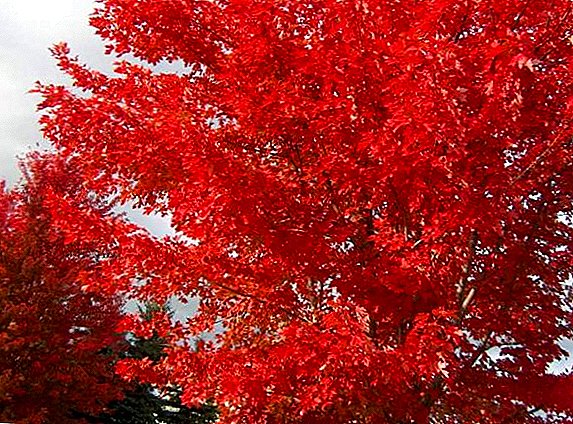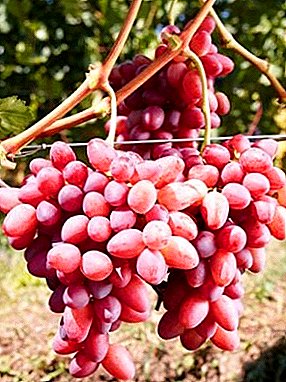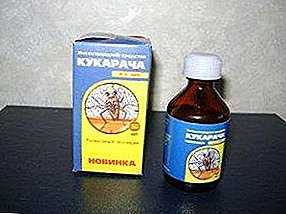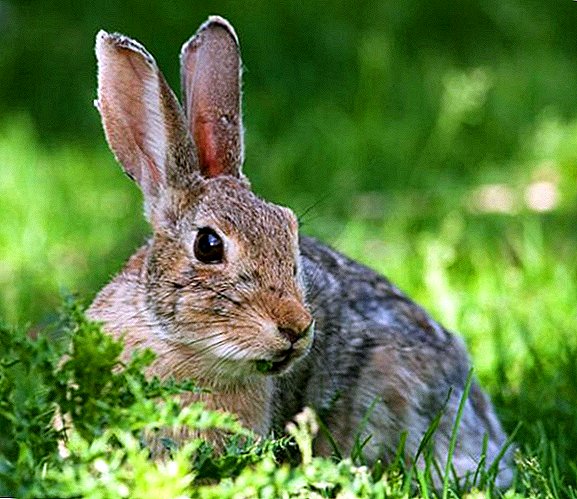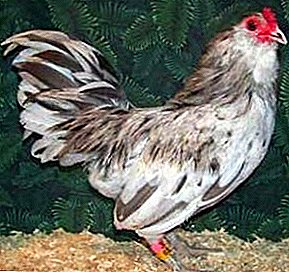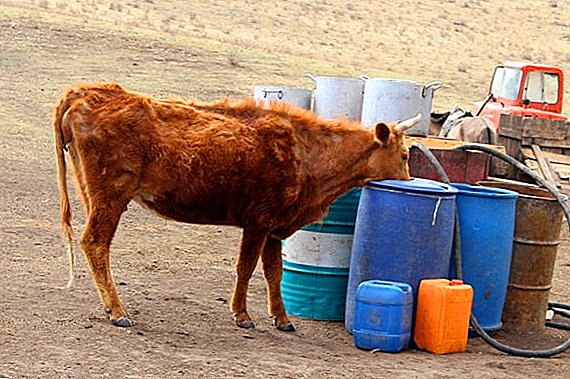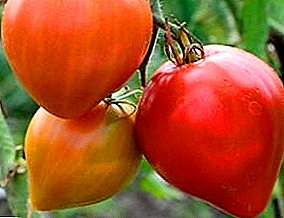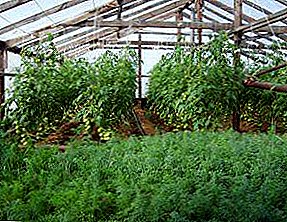
Fresh greens - excellent source of vitamins and trace elements. In summer, it grows in open ground, in the cold season green lovers will help out their own greenhouse.
Try to grow the most popular and undemanding crops: parsley and dill.
Their can be planted together with vegetables or other herbs. One small greenhouse will provide the needs of the whole family, and the remnants can be sold by replenishing your personal budget.
The advantages of greenhouse cultivation
Before you build a greenhouse and purchase seeds, make sure that this method of growing greens has a lot of advantages:
- In the heated greenhouse you can grow herbs all year round. Unheated allows you to extend the growth period by several months.
- Using biofuels, ruberoid insulation and other minor tricks, you can significantly save on electricity.
- Dill and parsley are very fruitful, planting can be done every two months. As a result, fresh greens will be available throughout the year.
- Excess crop can be sold. Fresh greens in winter is not cheapand demand is significantly ahead of supply.
- Dill grown in a greenhouse is not inferior in taste to summer greens collected on ordinary beds.
- Dill and parsley unpretentious, do not need constant feeding, frequent watering and treatment of parasites.
- Greenery can be planted with vegetables, filling all free space of the greenhouse and saving space.
- Even people who have no experience in agriculture can grow greens.
- Planting material is cheap.
Characteristics of crops: how to ensure a good harvest?
 For the successful cultivation of greenery need a small greenhouse from a tree or the metalprofile covered with glass, polycarbonate or a polyethylene film. For year-round cultivation optimal greenhouses, covered with polycarbonateThey do not require frequent repairs and retain heat well.
For the successful cultivation of greenery need a small greenhouse from a tree or the metalprofile covered with glass, polycarbonate or a polyethylene film. For year-round cultivation optimal greenhouses, covered with polycarbonateThey do not require frequent repairs and retain heat well.
Novice gardeners suitable budget option coated with plastic film. In regions with cold climates may require double glazingcreating a thermos effect.
The design should be equipped with air vents for ventilation. Greens can be grown in the ground or on racks. The latter option is suitable for those who are planning to build a business to sell fresh greens. Rack growing requires a more nutritious substrate that needs to be changed annually.
Parsley and dill need moderate moisture (about 70%). Greenhouse temperature must not exceed 20 degrees Celsius. A decrease in temperature causes a slowdown in growth, an increase leads to a withering of leaves and a loss of presentation. Greens need timely watering is not too cold water. How to organize photosynthesis of plants in the greenhouse, read on our website.
For lighting greenhouses using fluorescent lamps. They allow you to extend the daylight hours by several hours, which is especially important in late autumn and winter. Parsley and dill are not too demanding, they will not need round-the-clock coverage.
Dill and parsley yield
Parsley and dill grow very fast. The first crop of dill can be removed 2 months after planting. How much does parsley grow in a greenhouse? Parsley sprout before dill, after 1.5 months. Dill is removed along with the roots, parsley is trimmed before the formation of peduncles.
Cutting begins when young plants reach a length of 25 cm. The yield of dill per square meter in a greenhouse with proper care is at least 2.5 kg per season. The yield of parsley in the greenhouse is about the same as dill. To accelerate the forcing of parsley will help the use of rhizomes. This method of cultivation allows you to take the first harvest 1 month after planting in the greenhouse.
Beginner's Guide
Prepare the soil in the greenhouse. A mixture of garden soil and peat is calcined or spilled with a solution of copper sulfate. This treatment will destroy the insect larvae and pathogens. Then a small portion of mineral fertilizers or ash is introduced into the soil, the soil is carefully loosened. As a top dressing you can use and solution of mullein.
 Before sowing, parsley and dill seeds are kept for 4-5 days in a damp cloth. Seed swelling accelerates germination and allows you to quickly harvest.
Before sowing, parsley and dill seeds are kept for 4-5 days in a damp cloth. Seed swelling accelerates germination and allows you to quickly harvest.
Some growers prefer soak the seeds in a damp cloth longer, waiting for germs to appear. Germinated seeds take root better, do not get sick and do not require picks.
How to grow parsley in a greenhouse in winter? Sprouted parsley seeds land in the prepared ground at a distance of 5 cm. After planting, the soil should be watered well. How to grow dill in a greenhouse in winter? Dill is sown in rows with a distance of 30 cm, the depth of the seeds should not exceed 2 cm. After sowing, the soil is abundantly moistened. The best option for watering - drip, using a watering can with a wide sprayer.
Some gardeners prefer to grow parsley from rhizomes. The process of growing parsley in the greenhouse in winter from the rhizomes is more laborious, but the first greens can be obtained within a month after planting. For landing fit strong roots without damage, about 5 cm thick. Too long rhizomes can be cut into fragments of 6-8 cm in length. The remains of the tops are carefully removed. Prepared roots are placed in the cool sand for 10 days (the temperature of the sand is not higher than 2 degrees).
How to grow parsley in a greenhouse? Rough grooves at a distance of 15 cm are excavated in the ground. Rhizomes are plentifully watered with furrows and sprinkled with substrate. On the surface remains the neck and head of the root. The soil around is slightly compacted. Planted in the greenhouse roots give high-quality greens throughout the year, a resting phase between the cuts is required.
How to grow dill and parsley in a greenhouse? After planting, dill and parsley should be watered regularly, avoiding stagnant water. Plants do not like overmoistening.
Plants quietly tolerate minor temperature drops, they are insensitive to drafts. Do not allow the temperature to rise. Excessive heat young greens endure worse than a slight decrease in temperature or frost.
Parsley and dill do not need too bright light. The task of the lamps in the greenhouse is to extend the daylight hours in winter. In the summer, the backlight is not used. Occasionally weeding should be done in the greenhouseremoving weeds. After removal of the first harvest, fertilizing with an aqueous solution of mullein is recommended.
 When harvesting parsley greens need to be cut carefully, without damaging the growth points. Young greens cut with a sharp knife or garden shears.
When harvesting parsley greens need to be cut carefully, without damaging the growth points. Young greens cut with a sharp knife or garden shears.
Dill is removed along with the roots, the vacated areas are loosened and prepared for sowing a new batch of seeds. To ensure uninterrupted yield of dill in the greenhouse - growing, or rather planting, it is better to carry out portions, at intervals of 1-2 months.
Green crops can be grown with vegetables. Dill is especially convenient, it can fill all free space without interfering with planted tomatoes, eggplants or peppers. You can grow dill and parsley with celery, cilantro, mint and other herbs.
Growing dill and parsley in a greenhouse in winter - Excellent experience for novice gardeners. After receiving the first harvest, you can think about breeding other, more capricious crops.
Video about planting dill in the greenhouse. Also, there is partially information about planting radishes in the greenhouse, which can be found in more detail in our article.


